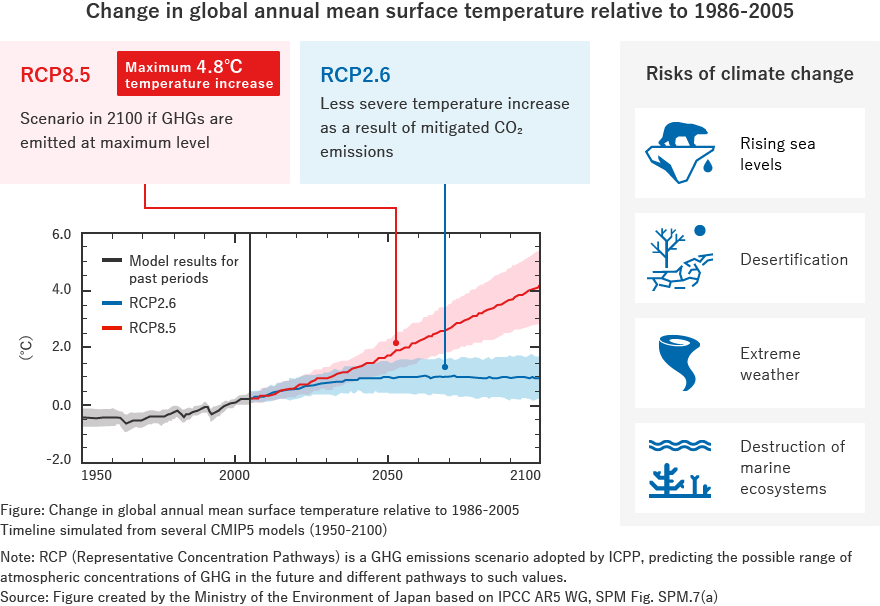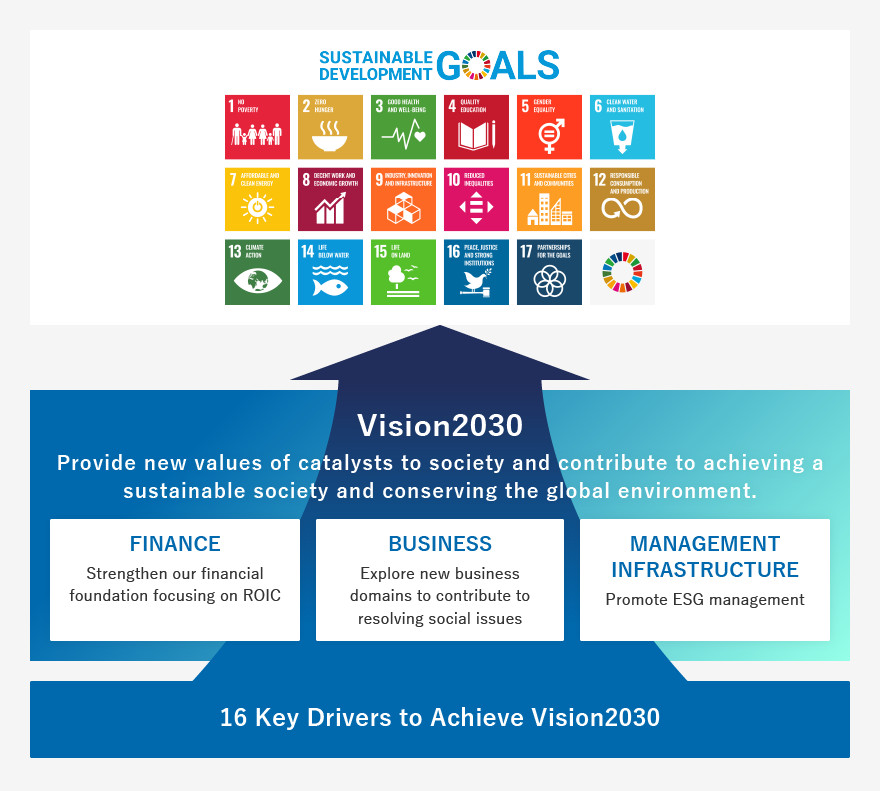Our Vision

Background
Today, we face a lot of issues that need to be resolved on a global level as identified in the Sustainable Development Goals, including critical environmental issues represented by global warming, marine pollution, and deforestation, poverty, human rights violation, and inequality between developed and developing countries. There are rising expectations for companies to contribute to addressing these social issues.
Against such backdrop, we, N.E. CHEMCAT, established our Corporate Philosophy and Corporate Guiding Principles in April 2021 in order to renew our roles in society and to set our behavior in contributing to the realization of a sustainable society. Our Corporate Philosophy embodies the raison d'etre (meaning of existence) and mission of our company and sets forth the basis of management that we must pursue regardless of the changing business environment.
Under this new Corporate Philosophy, we further formulated "Vision 2030" to show the long-term direction to aim for. In 2050, we expect to see further population growth, Asian-led economic development, worsened environmental problems, and circular societies with greater use of renewable energy and achievement of carbon neutrality on a global scale. Meanwhile, in Japan, we anticipate smaller labor population, slower GDP growth, and accelerated efforts towards energy independence and circular society. Backcasting from the forecast of social environment that is expected to surround our business in 2050, Vision 2030 visualizes the desirable form of the Company in 2030 from the three perspectives of "Finance", "Business", and "Management Infrastructure" to determine the direction in which to proceed.
Vision 2030
To provide new values in catalysts to society and thereby contribute greatly to the development of a sustainable society and protection of the global environment.
Finance
To build a lean internal process that helps to increase throughput, allocate assets needed for business operations in a planned manner on the basis of return on invested capital (ROIC), and thereby support the sustainable growth and development of our business and strengthen the financial foundation.
Business
To develop new catalyst technologies and business domains that contribute to solving such social challenges as those addressed by the SDGs, on the basis of the catalyst technologies and customer relations we have built over the years, and thereby achieve sustainable growth.
Management infrastructure
To practice sound business management, based on the principles of environment, social, and governance (ESG) management, build an environment and structure that allows employees to share the joy of working for N.E. CHEMCAT and constantly breed innovation in collaboration with stakeholders, and thereby increase our corporate value.
Catalysts are vital for countless chemical reactions and are widely used by chemical engineering and other industries. Since its foundation, N.E. CHEMCAT has provided catalysts for the development of the entire society and contributed in efforts to resolve environmental issues, for example, by detoxifying exhaust gas with our auto exhaust catalysts.
Meanwhile, environmental pollution and global warming are becoming increasingly serious. Studies estimate that the global mean surface temperature could be 2C higher by 2050, and up to 4.8C higher by 2100. Further global warming will cause rising sea levels, desertification, extreme weather, destruction of marine ecosystems, and other impacts. That is why reducing CO2 emission is imperative.

As such, in 2050, we expect to see accelerated efforts towards a circular society through, for example, greater use of renewable energy and achieving carbon neutrality.
We will work towards realizing a sustainable society by offering new values to society based on our expertise and technologies accumulated through our business in the development and production of catalysts and recycling of precious metals. We will also enhance our efforts in the FCV and hydrogen-related areas to achieve decarbonization, and aim to expand the ratio of environmental conservation and sustainable development-related businesses to more than 80%.

In order to achieve these goals, we have positioned return on invested capital (ROIC) as our priority management indicator to strengthen our existing businesses and incubate new businesses. We will achieve optimized allocation of our management resources and promote leaner processes to maximize throughput.
To strengthen our management base, we will promote ESG management. We will take actions to reduce environmental impacts throughout our business activities through reduction of carbon intensity (50% cut from 2013), strengthen our ties with stakeholders, conduct sound management, and create a vibrant working environment. Through such efforts, we aim to promote innovation and achieve sustainable growth and improve corporate value.
Measures to Achieve Our Vision 2030
As the business environment surrounding the Company is rapidly changing, so in order to achieve our Vision 2030 and to grow and develop sustainably, it is vital that we undergo corporate transformation by making radical changes to the Company's sense of values and structure.
We have established 16 key drivers to achieve our Vision with which we will reform our existing structure and transform the Company so that we can create new value.
16 Key Drivers to Achieve Our Vision 2030
| Finance |
|
|---|---|
| Business |
|
| Management Infrastructure |
|

